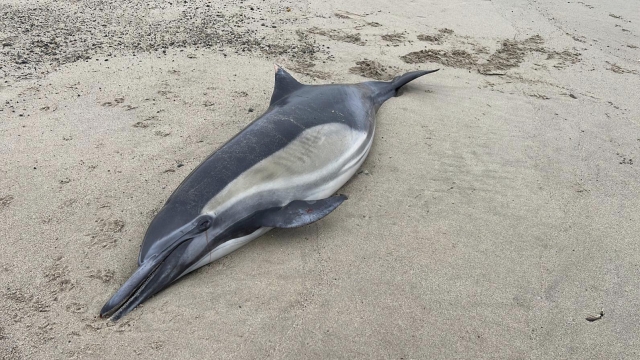Along the Southern California coast, there are deadly signs of a warming ocean.
"It is true that we are finding that there's an increase of these blooms as the oceans are warming, so definitely as a result of climate change," said Kathi Lefebvre, a research biologist at Northwest Fisheries Science Center.
A toxic algae bloom is injuring or killing scores of marine animals, from fish to sea lions and dolphins. Those found alive on the shore are ending up in the care of vets like Lauren Palmer.
"We're a small facility so every pen is packed," said Palmer.
It's an especially bad year for the regular "red tide," as many call it.
"Red tide is kind of a misnomer because it's really describing one type of algae that's reddish. But most people know that term. So what we call them are harmful algal blooms. The numbers of animals that we're seeing are very high," said Lefebvre.
At Marine Mammal Care Los Angeles, workers are trying to care for some 120 animals. It's a massive number for their operation.
SEE MORE: NOAA model shows record marine heat waves — and predicts more
Workers at Channel Islands Marine and Wildlife Institute have rescued 105 sea lions in less than two months. Hundreds are poisoned with something called domoic acid, a neurotoxin from a particular kind of algae in the water.
"They get permanent brain damage. They get cell death in some place called the hippocampus, which deals with memory and spatial memory. So some of these sea lions have a permanent condition where they can no longer navigate properly," said Lefebvre.
The impact can potentially be harmful to humans, too.
"This bloom that's happening now is responsible for something called amnesic shellfish poisoning, or ASP. So shellfish are tested for those toxins and if they're too high ... they can't be sold or harvested," said Lefebvre.
For Palmer, it’s a bit of a waiting game to release healthy animals.
"We are going to try to retain the animals that we have for as long as possible, hoping that the bloom will mitigate and pass in the next couple of weeks. If we send them back out now and they return with clinical signs of domoic acid, I won't know if they were reinfected or if they had retained, you know, brain damage from this first event," said Palmer.
It's a cost of our changing climate with little recourse to stop it.
"We think that we'll probably be seeing more of these events in the future, more frequent, maybe longer duration and maybe greater intensity," said Palmer.
Trending stories at Scrippsnews.com




